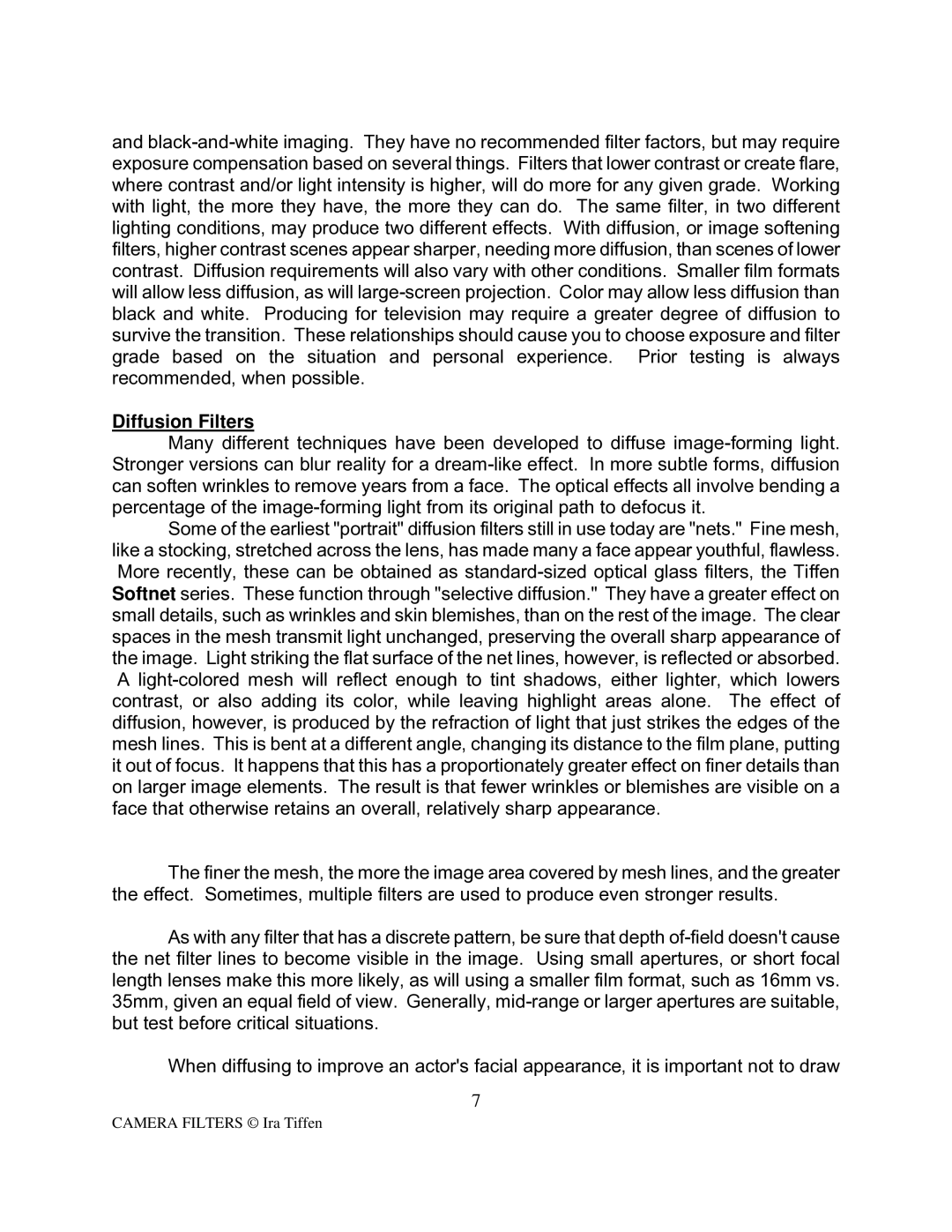and black-and-white imaging. They have no recommended filter factors, but may require exposure compensation based on several things. Filters that lower contrast or create flare, where contrast and/or light intensity is higher, will do more for any given grade. Working with light, the more they have, the more they can do. The same filter, in two different lighting conditions, may produce two different effects. With diffusion, or image softening filters, higher contrast scenes appear sharper, needing more diffusion, than scenes of lower contrast. Diffusion requirements will also vary with other conditions. Smaller film formats will allow less diffusion, as will large-screen projection. Color may allow less diffusion than black and white. Producing for television may require a greater degree of diffusion to survive the transition. These relationships should cause you to choose exposure and filter grade based on the situation and personal experience. Prior testing is always recommended, when possible.
Diffusion Filters
Many different techniques have been developed to diffuse image-forming light. Stronger versions can blur reality for a dream-like effect. In more subtle forms, diffusion can soften wrinkles to remove years from a face. The optical effects all involve bending a percentage of the image-forming light from its original path to defocus it.
Some of the earliest "portrait" diffusion filters still in use today are "nets." Fine mesh, like a stocking, stretched across the lens, has made many a face appear youthful, flawless. More recently, these can be obtained as standard-sized optical glass filters, the Tiffen Softnet series. These function through "selective diffusion." They have a greater effect on small details, such as wrinkles and skin blemishes, than on the rest of the image. The clear spaces in the mesh transmit light unchanged, preserving the overall sharp appearance of the image. Light striking the flat surface of the net lines, however, is reflected or absorbed. A light-colored mesh will reflect enough to tint shadows, either lighter, which lowers contrast, or also adding its color, while leaving highlight areas alone. The effect of diffusion, however, is produced by the refraction of light that just strikes the edges of the mesh lines. This is bent at a different angle, changing its distance to the film plane, putting it out of focus. It happens that this has a proportionately greater effect on finer details than on larger image elements. The result is that fewer wrinkles or blemishes are visible on a face that otherwise retains an overall, relatively sharp appearance.
The finer the mesh, the more the image area covered by mesh lines, and the greater the effect. Sometimes, multiple filters are used to produce even stronger results.
As with any filter that has a discrete pattern, be sure that depth of-field doesn't cause the net filter lines to become visible in the image. Using small apertures, or short focal length lenses make this more likely, as will using a smaller film format, such as 16mm vs. 35mm, given an equal field of view. Generally, mid-range or larger apertures are suitable, but test before critical situations.
When diffusing to improve an actor's facial appearance, it is important not to draw
7
CAMERA FILTERS © Ira Tiffen
